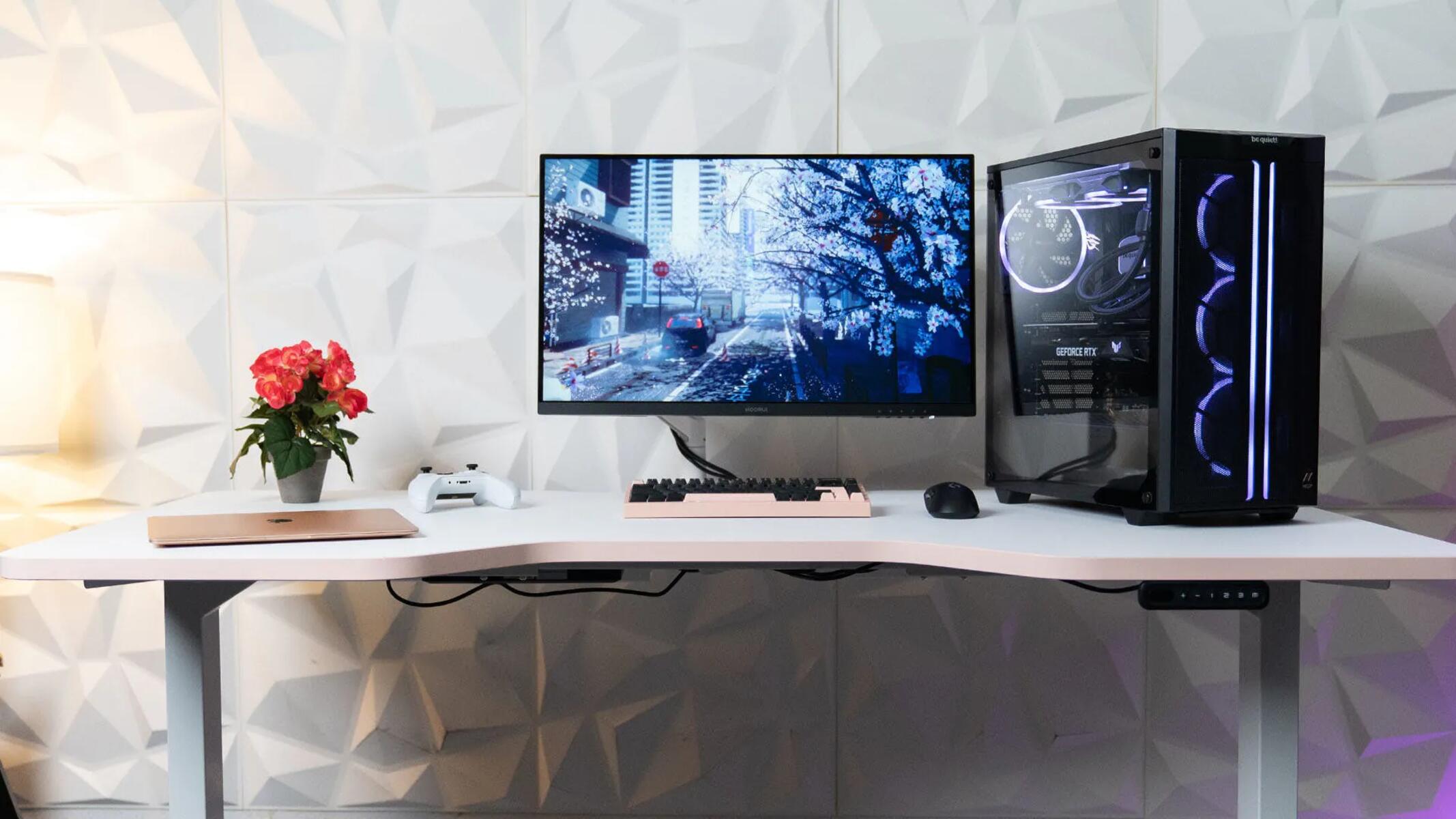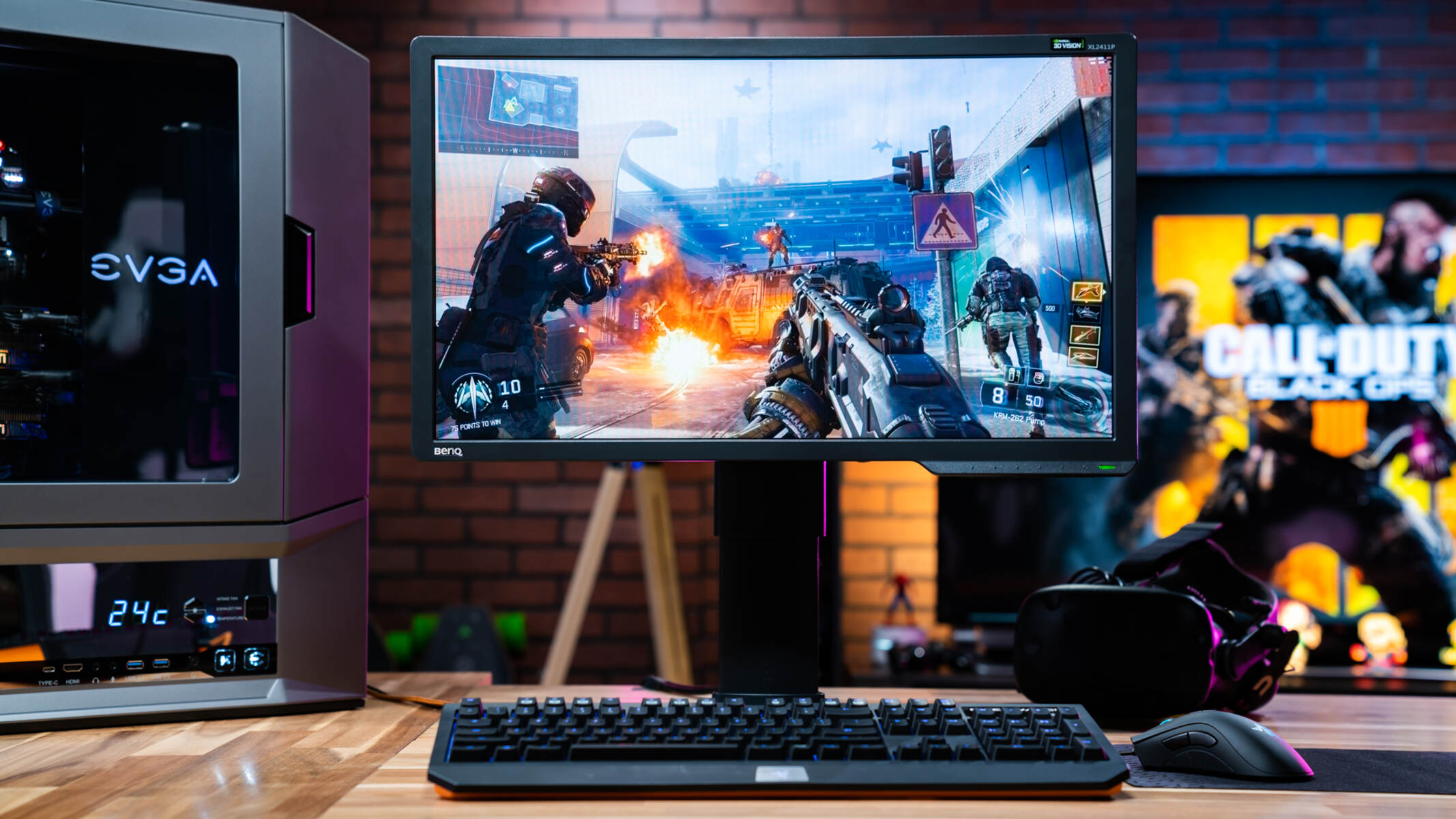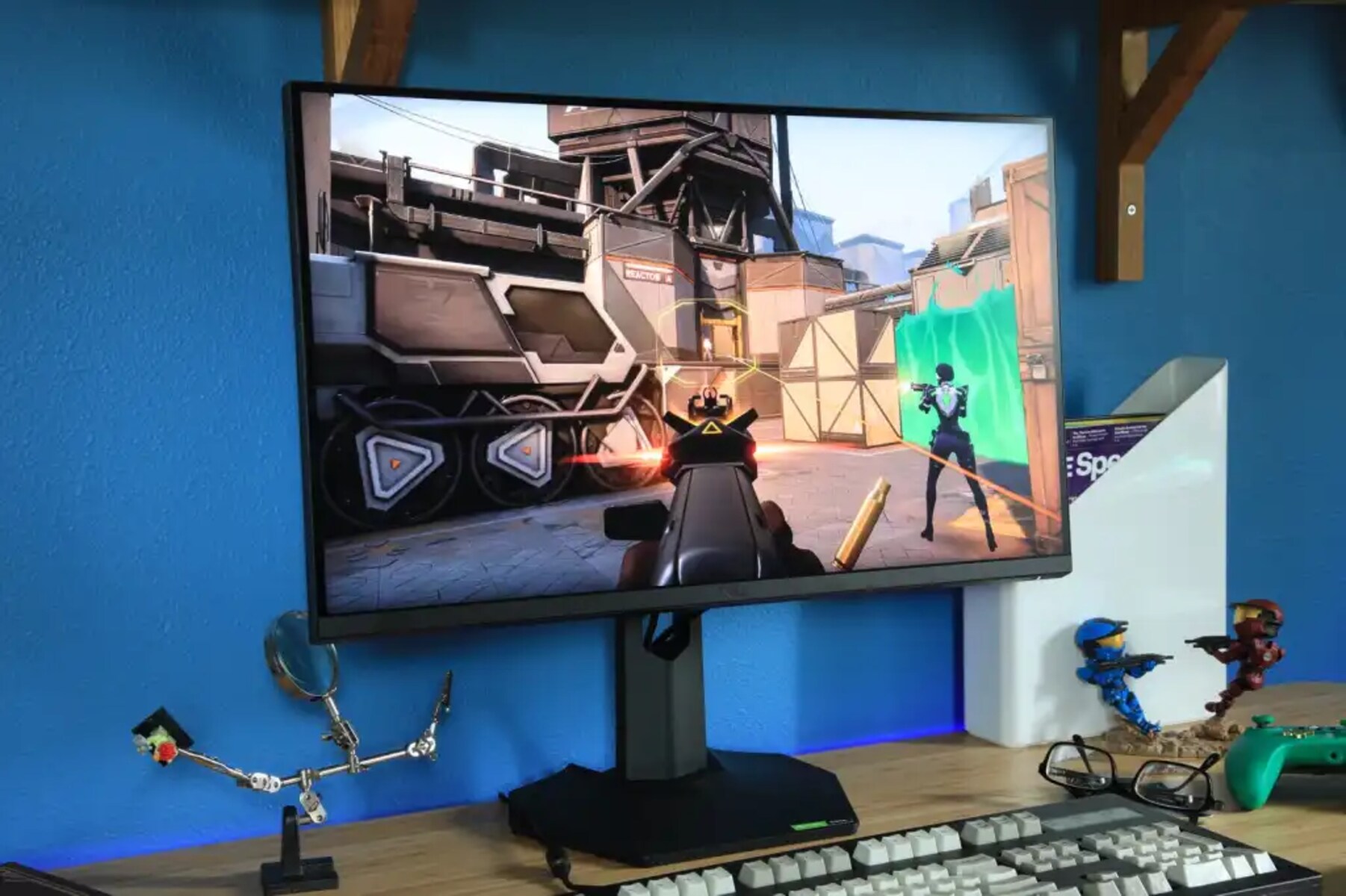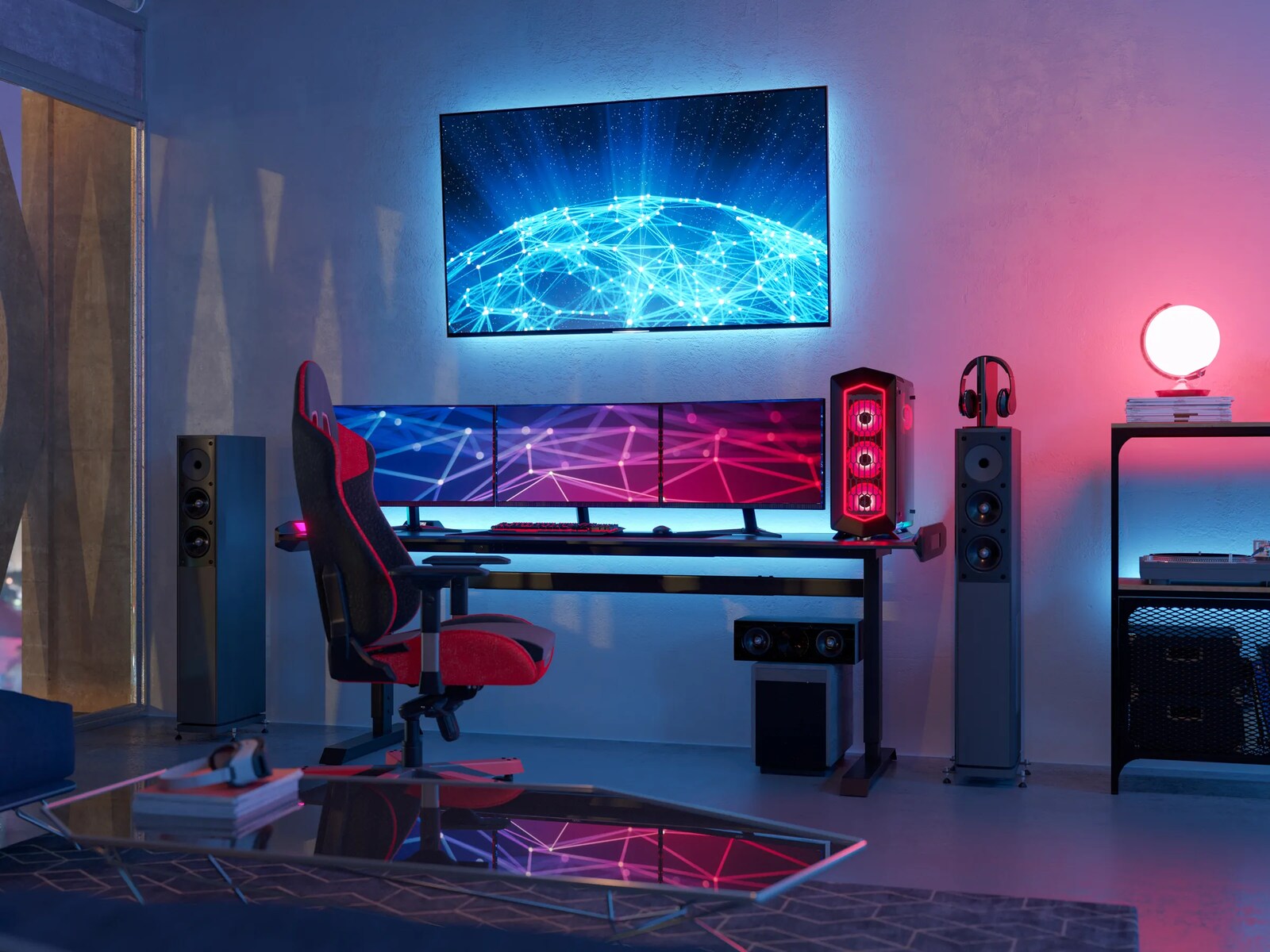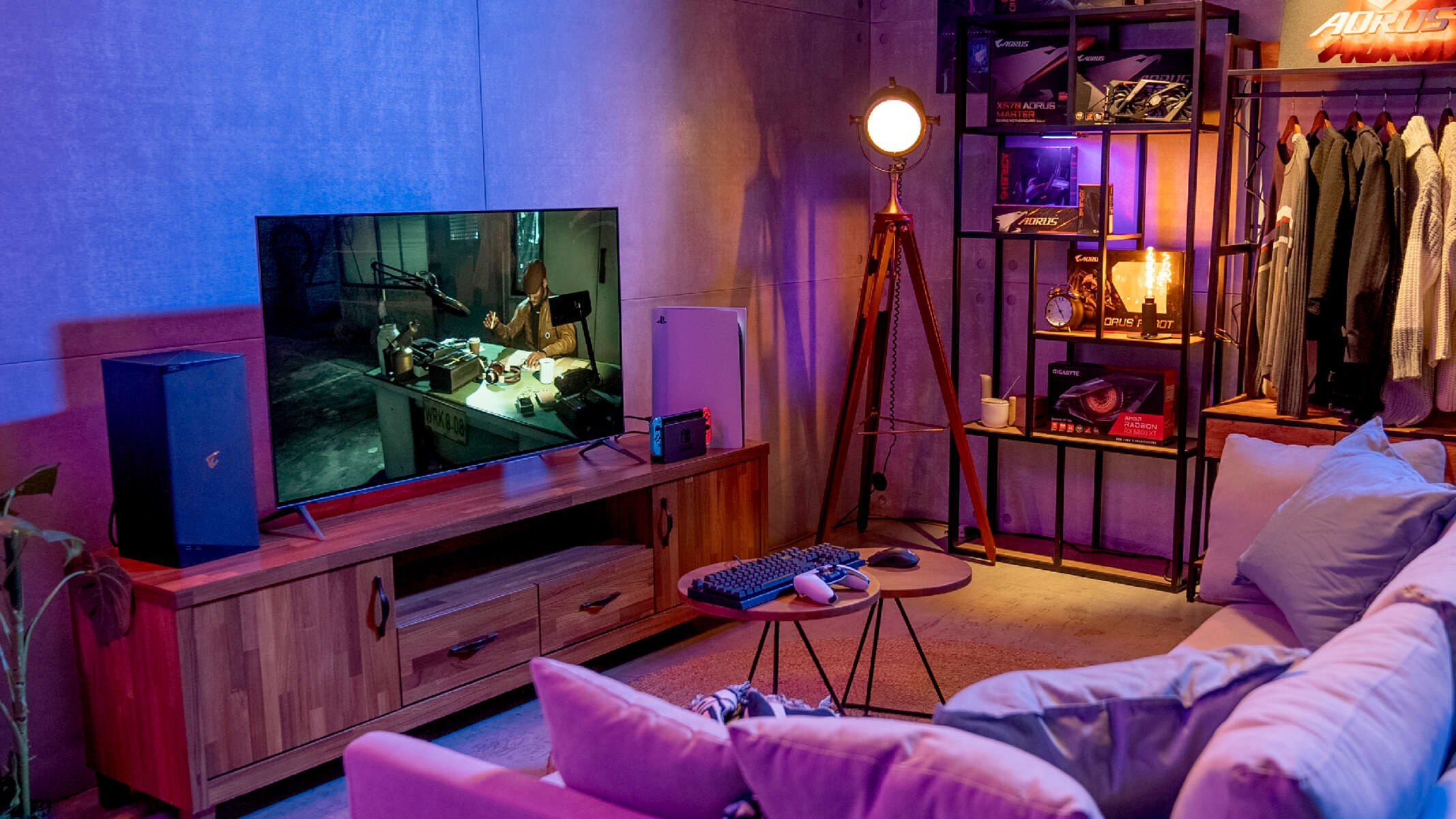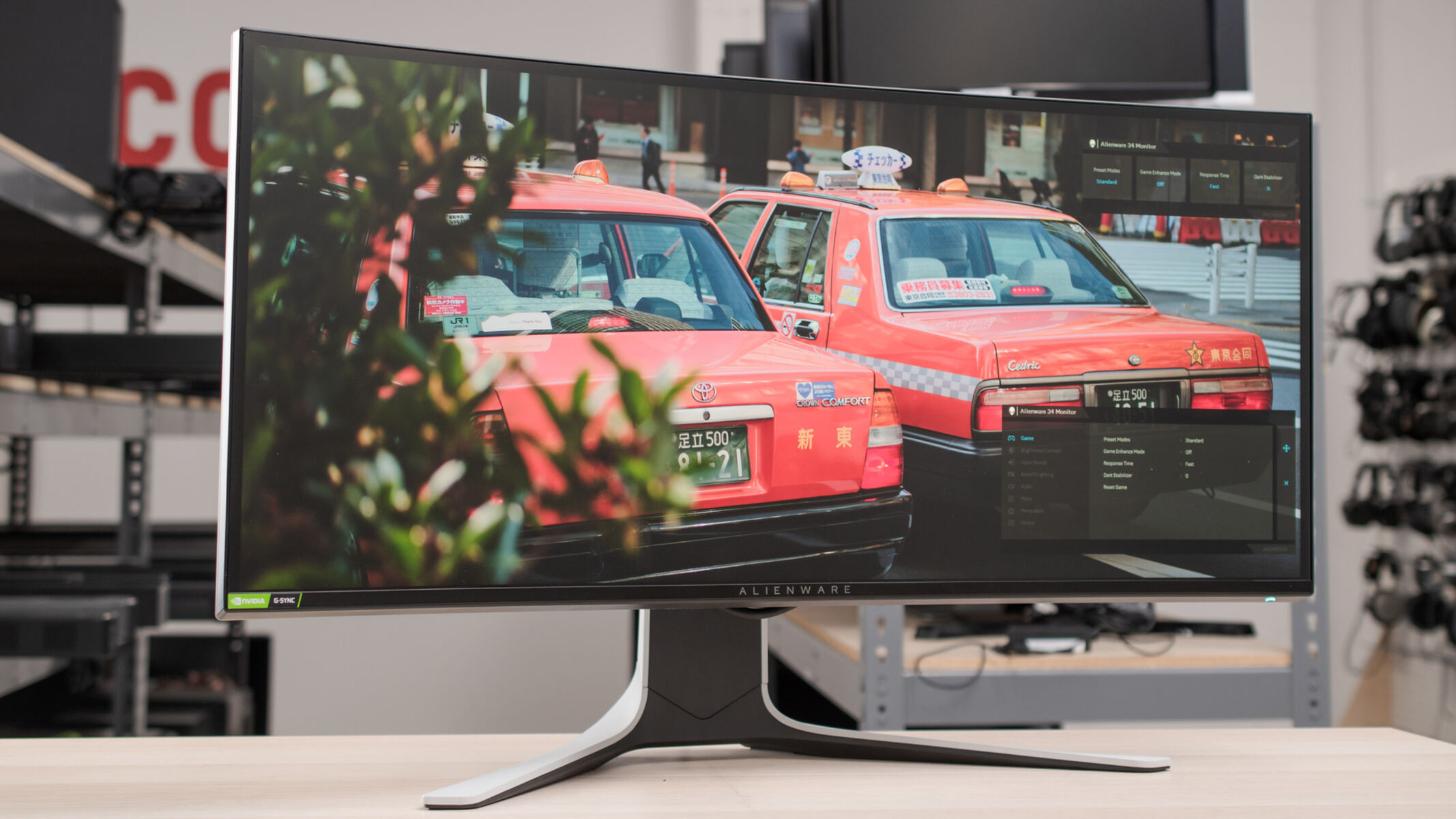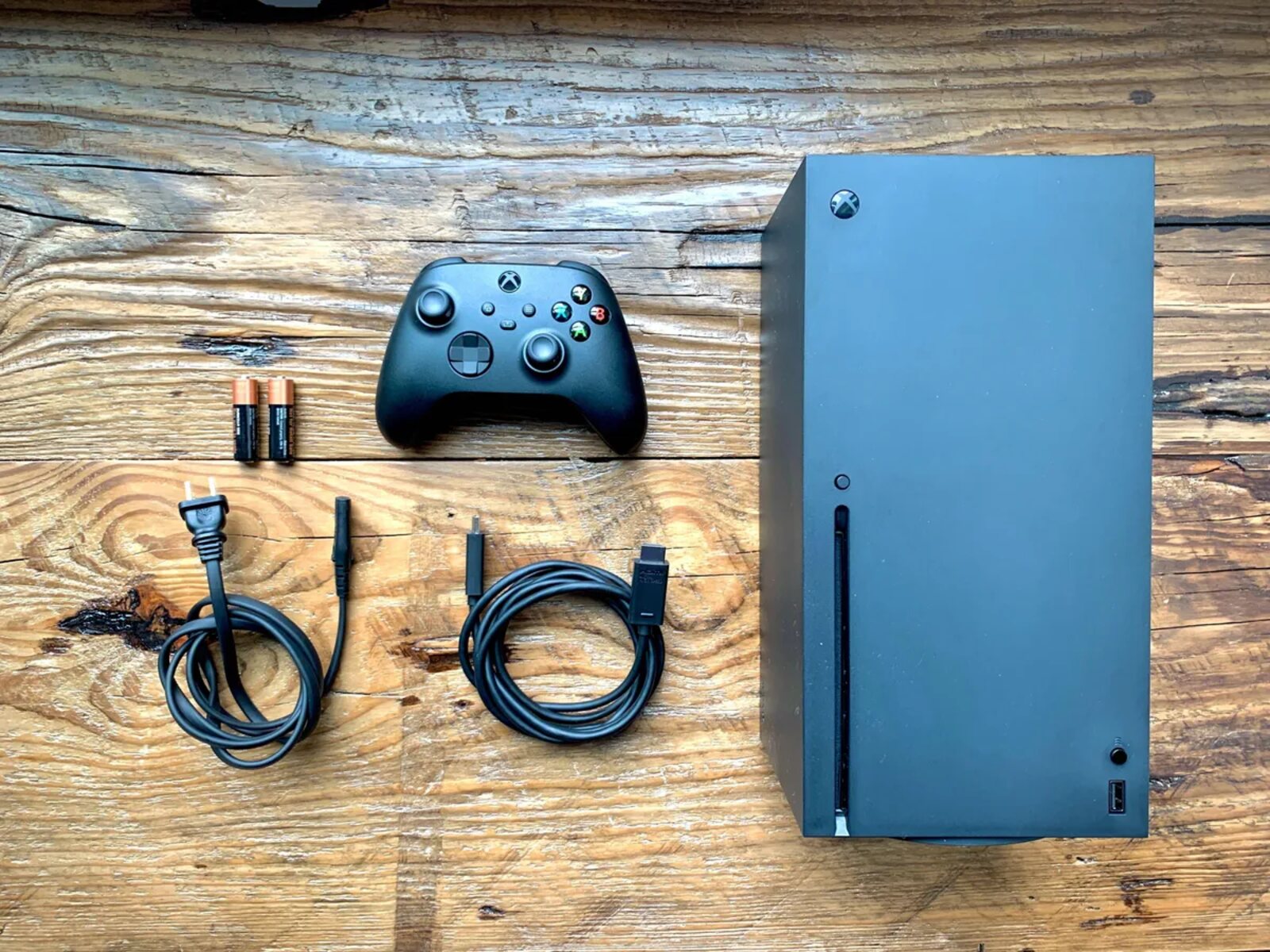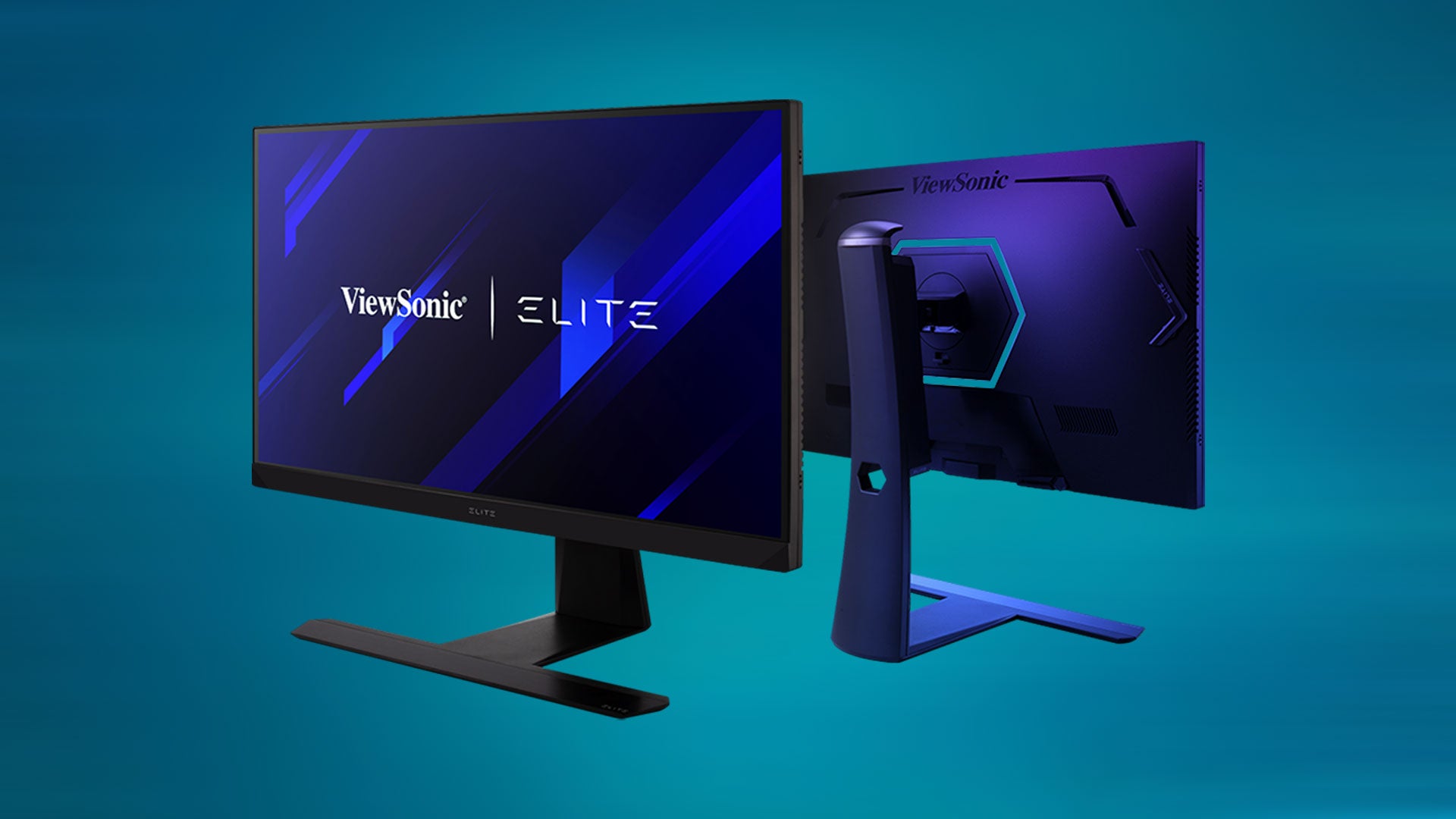Introduction
Choosing the best cable for a gaming monitor is essential to ensure a smooth and immersive gaming experience. With the advancement in display technologies and the variety of cable options available, it’s crucial to understand the differences and choose the right cable for your specific needs.
A high-quality cable can make a significant difference in terms of visual clarity, color accuracy, and refresh rate. It can enhance the overall performance of your gaming monitor, allowing you to fully enjoy the stunning graphics and responsive gameplay that modern games offer.
In this article, we will explore the various cable options commonly used for gaming monitors and discuss their advantages and limitations. We will look at HDMI, DisplayPort, DVI, and VGA cables, which are the most popular choices for connecting gaming monitors to computers or gaming consoles.
By understanding the capabilities and features of each cable type, you’ll be able to make an informed decision and select the best cable for your gaming monitor setup. Whether you’re a casual gamer or a professional esports player, choosing the right cable can significantly enhance your gaming experience.
Before diving into the different cable types, it’s important to note that not all cables are created equal. Factors such as cable length, build quality, and data transmission speed can impact the quality of the signal and the performance of your gaming monitor. Therefore, it’s crucial to choose a cable that meets the requirements of your gaming setup and offers reliable and consistent performance.
Now, let’s delve into the specifics of each cable type and understand their unique characteristics and functionalities to determine which one is the best cable for your gaming monitor.
HDMI Cable
HDMI (High-Definition Multimedia Interface) cables have become the standard for connecting gaming monitors to devices such as gaming consoles, computers, and streaming devices. They are capable of transmitting both high-quality video and audio signals in a single cable, eliminating the need for additional cables or adapters.
HDMI cables come in different versions, with the most common being HDMI 1.4, HDMI 2.0, and the latest HDMI 2.1. The higher the version number, the better the cable’s capabilities in terms of resolution, refresh rate, and color depth support.
HDMI cables support a wide range of resolutions, including Full HD (1080p), 4K UHD (2160p), and even 8K (4320p) in the latest HDMI 2.1 version. They also have the ability to carry high-quality audio formats like Dolby TrueHD and DTS-HD Master Audio, providing an immersive gaming experience.
One of the key advantages of HDMI over other cable types is its compatibility with various audio and video formats. It supports both 2-channel stereo and multi-channel surround sound systems, making it ideal for gaming setups with external speakers or headphones.
Another benefit of HDMI cables is their ability to transmit audio and video signals over long distances without any degradation in quality. However, it’s important to choose a high-quality HDMI cable with good shielding to ensure optimal signal transmission and prevent any interference.
When choosing an HDMI cable for your gaming monitor, it’s important to consider the version that matches your monitor’s capabilities. If you have a 4K UHD monitor with a high refresh rate, it’s recommended to use an HDMI 2.0 or HDMI 2.1 cable to take full advantage of the monitor’s features.
In summary, HDMI cables are widely used for connecting gaming monitors due to their versatility, ability to transmit high-quality video and audio signals, and compatibility with various resolutions and audio formats. They are a reliable choice for gamers looking for a single cable solution that delivers excellent performance.
DisplayPort Cable
The DisplayPort cable is another popular choice for connecting gaming monitors to devices. It was developed by the VESA (Video Electronics Standards Association) as a high-performance digital display interface.
One of the key advantages of DisplayPort cables is their ability to support higher refresh rates and resolutions compared to HDMI cables. DisplayPort 1.2, which is the most common version, can support resolutions up to 4K (3840×2160) at a 60Hz refresh rate. The newer DisplayPort 1.4 and DisplayPort 2.0 versions can even handle higher resolutions and refresh rates, including 8K (7680×4320) at 60Hz and 4K at 144Hz or 240Hz.
In addition to higher resolutions and refresh rates, DisplayPort cables offer other features like multi-stream transport (MST) and daisy-chaining. MST allows you to connect multiple monitors to a single DisplayPort output, enabling an extended desktop or a multi-monitor gaming setup. Daisy-chaining, on the other hand, allows you to connect multiple monitors in a series using a single cable, simplifying cable management.
DisplayPort cables also support various color depths and color spaces, including 8-bit, 10-bit, and 12-bit color, as well as the RGB and YCbCr color spaces. This ensures accurate color reproduction, making them an excellent choice for gaming setups that require precise color representation.
Another notable feature of DisplayPort cables is their support for Adaptive Sync technologies, such as AMD FreeSync and NVIDIA G-Sync. These technologies synchronize the refresh rate of the monitor with the frame rate of the graphics card, eliminating screen tearing and providing a smoother gaming experience.
When choosing a DisplayPort cable, it’s important to consider the version that matches your gaming monitor’s capabilities. If you have a high-resolution monitor with a high refresh rate and you want to take full advantage of these features, using a DisplayPort 1.4 or DisplayPort 2.0 cable is recommended.
In summary, DisplayPort cables are known for their ability to support higher resolutions, refresh rates, and color depths compared to HDMI cables. They also offer features like MST, daisy-chaining, and support for Adaptive Sync technologies, making them an excellent choice for gamers who prioritize performance and functionality.
DVI Cable
The Digital Visual Interface (DVI) cable has been a widely used option for connecting gaming monitors to computers for many years. Although it has been largely superseded by HDMI and DisplayPort, DVI cables still have their advantages in certain scenarios.
DVI cables come in three main variants: DVI-D (digital-only), DVI-I (integrated digital and analog), and DVI-A (analog-only). The digital variants (DVI-D and DVI-I) are commonly used for gaming monitors, as they provide a high-quality digital signal without any loss in image quality.
One of the primary advantages of DVI cables is their support for higher resolutions and refresh rates. DVI cables can handle resolutions up to 2560×1600 at 60Hz, making them suitable for gaming on high-resolution monitors. However, it’s important to note that DVI does not support audio transmission, so if audio is required, a separate audio cable or alternative connection method will be needed.
Another advantage of DVI cables is their compatibility with older hardware. Many older graphics cards and monitors still feature DVI ports, making it a convenient option for gamers who have older equipment.
DVI cables also offer better signal quality over longer distances compared to VGA cables, which can result in sharper and clearer images on the gaming monitor. However, it’s important to ensure a high-quality DVI cable with proper shielding and insulation to maintain optimal signal integrity.
While DVI cables have their advantages, they also have limitations. For instance, they lack features such as audio transmission, Adaptive Sync technologies, and multi-monitor support. Additionally, newer gaming monitors and graphics cards may not come equipped with DVI ports, limiting their compatibility.
If your gaming monitor and graphics card support DVI, and you prioritize higher resolutions and refresh rates over features like audio transmission and Adaptive Sync, then using a DVI cable can still be a viable option.
In summary, DVI cables are a solid choice if you have older hardware or if your gaming monitor supports higher resolutions and refresh rates but lacks HDMI or DisplayPort ports. However, it’s essential to consider the limitations and compatibility issues before deciding to use a DVI cable for your gaming setup.
VGA Cable
The Video Graphics Array (VGA) cable was once the standard for connecting monitors to computers and gaming consoles. However, with the advent of digital display interfaces like HDMI and DisplayPort, VGA cables have become less common in modern gaming setups.
VGA cables transmit analog video signals, which can result in lower image quality compared to digital interfaces like HDMI and DisplayPort. They have a maximum resolution of 1920×1080 at 60Hz, which is limited compared to the higher resolutions supported by HDMI and DisplayPort cables.
One of the primary advantages of VGA cables is their wide compatibility with older monitors and devices that still feature VGA ports. If you have an older gaming monitor or graphics card that only supports VGA, a VGA cable can provide a suitable connection.
However, it’s important to note that VGA cables do not transmit audio signals. Therefore, if audio is required, an additional audio cable or alternative connection method will be necessary.
One drawback of VGA cables is their susceptibility to signal degradation over longer distances. The analog nature of the signal can lead to interference and a decrease in image quality, especially over extended cable lengths. It’s important to use high-quality VGA cables and keep cable lengths as short as possible to minimize signal loss.
Another limitation of VGA cables is their inability to support modern features like higher refresh rates, Adaptive Sync technologies, and higher color depths. If you’re looking for a gaming setup that can take advantage of these features, it’s recommended to use digital display interfaces like HDMI or DisplayPort instead.
In summary, VGA cables are a legacy option for connecting gaming monitors to older devices. They offer wide compatibility with VGA-enabled hardware but have limitations in terms of image quality, resolution, and lack of audio transmission. If you have older equipment that only supports VGA or require a temporary solution, VGA cables can still serve their purpose. However, for optimal gaming performance and compatibility with modern features, it’s recommended to use digital display interfaces like HDMI or DisplayPort.
Choosing the Best Cable
When it comes to choosing the best cable for your gaming monitor, there are several factors to consider. Each cable type – HDMI, DisplayPort, DVI, and VGA – has its advantages and limitations. Here are some key points to help you make an informed decision:
- Resolution and Refresh Rate: Consider the maximum resolution and refresh rate supported by your gaming monitor. If you have a high-resolution monitor with a high refresh rate, HDMI 2.0 or DisplayPort 1.4/2.0 cables are recommended to fully utilize these capabilities.
- Audio Transmission: If you require audio transmission along with the video signal, HDMI and DisplayPort cables are the best choices as they support audio data in a single cable.
- Compatibility: Check the ports available on your gaming monitor and the graphics card or gaming console you plan to connect it to. Ensure that the cable you choose is compatible with both devices.
- Additional Features: Consider any additional features you may need, such as Adaptive Sync technologies like AMD FreeSync or NVIDIA G-Sync. DisplayPort cables are commonly used for these features, so make sure your monitor and graphics card support them.
- Cable Length: Determine the required cable length for your gaming setup. Longer cable lengths can lead to signal degradation, so choose a high-quality cable that matches your needs without sacrificing signal quality.
- Budget: Consider your budget when choosing a cable. HDMI cables are generally more affordable and widely available, while DisplayPort cables may be slightly more expensive but offer advanced features. DVI and VGA cables are often cheaper but have limitations in terms of resolution and functionality.
By considering these factors and weighing the capabilities of each cable type, you can choose the best cable for your gaming monitor setup. It’s important to remember that investing in a high-quality cable ensures optimal signal transmission and performance, leading to an enjoyable and immersive gaming experience.
Conclusion
Choosing the best cable for your gaming monitor is essential to maximize your gaming experience. HDMI, DisplayPort, DVI, and VGA cables are the most commonly used options, each with its own advantages and limitations.
HDMI cables provide a versatile solution with support for high resolutions, audio transmission, and compatibility with various devices. DisplayPort cables offer higher refresh rates, advanced features like Adaptive Sync, and multi-monitor support. DVI cables are a viable choice for older hardware or high-resolution displays without audio requirements. VGA cables, although outdated, still provide compatibility with older devices supporting VGA ports.
When selecting a cable, consider factors such as resolution, refresh rate, audio transmission, compatibility, additional features, cable length, and budget. By understanding your gaming monitor’s capabilities and your specific needs, you can make an informed decision.
Investing in a high-quality cable is crucial to ensure optimal signal transmission and performance. A reliable cable will provide clear and vibrant visuals, smooth gameplay, and immersive audio, enhancing your overall gaming experience.
In conclusion, selecting the best cable for your gaming monitor involves considering the unique features and requirements of your setup. By choosing the right cable, you can unlock the full potential of your gaming monitor and enjoy an exceptional gaming experience with stunning visuals and seamless gameplay.







